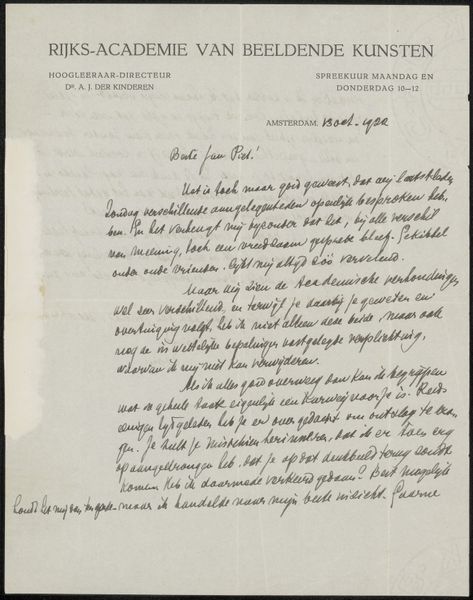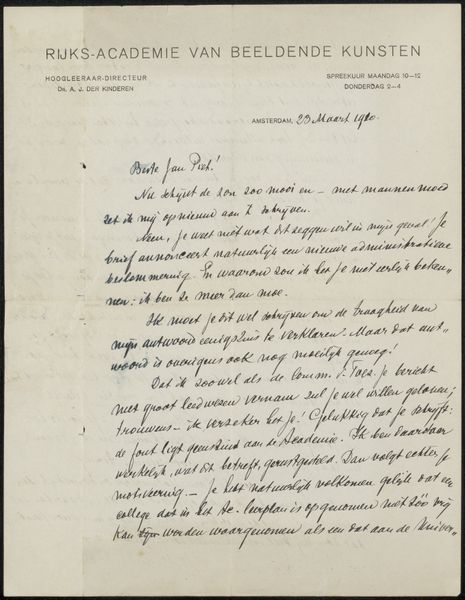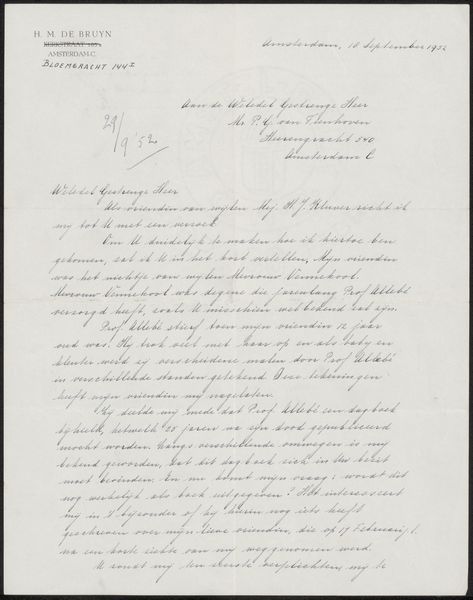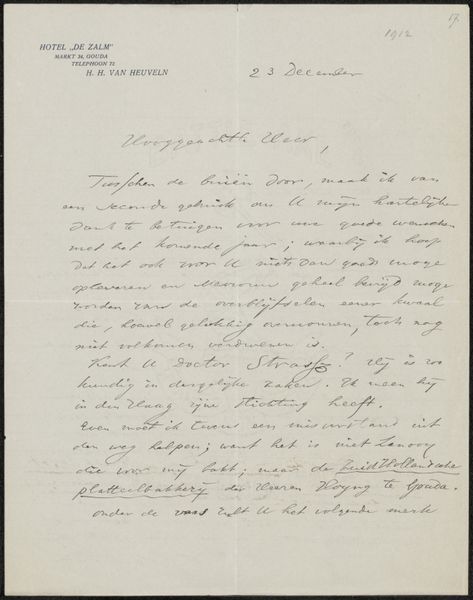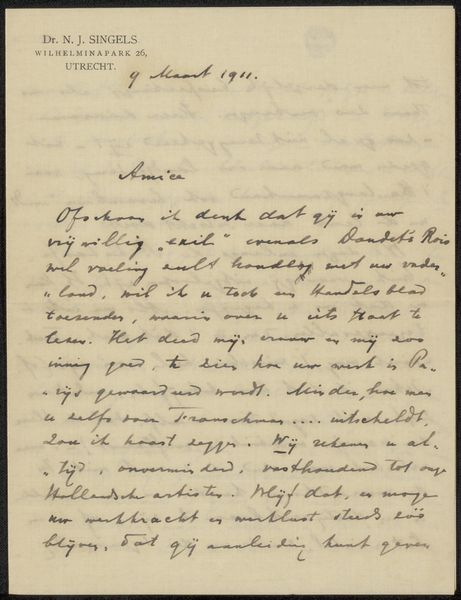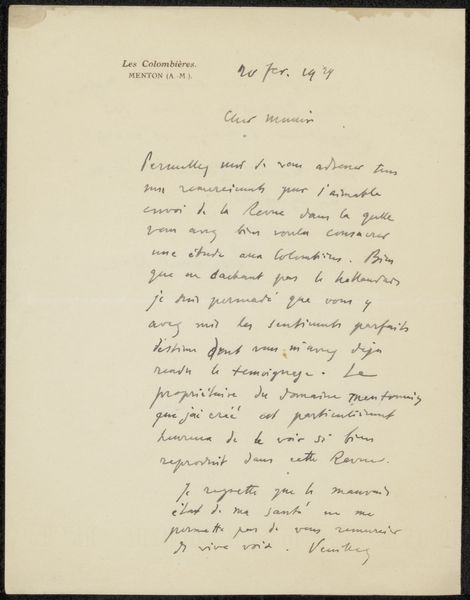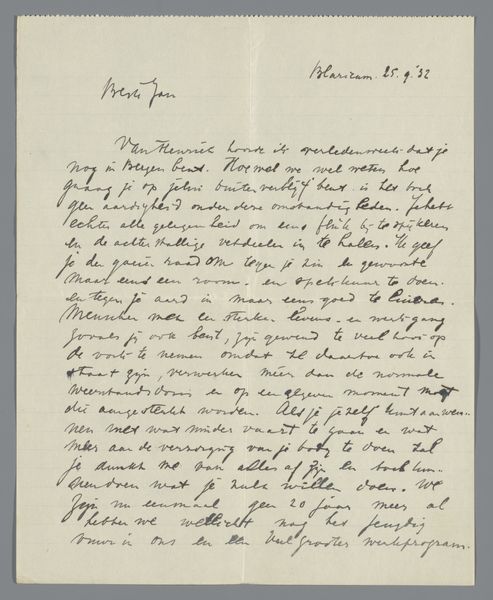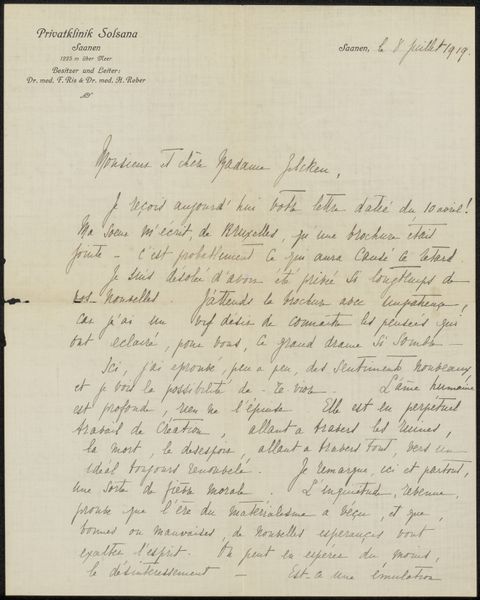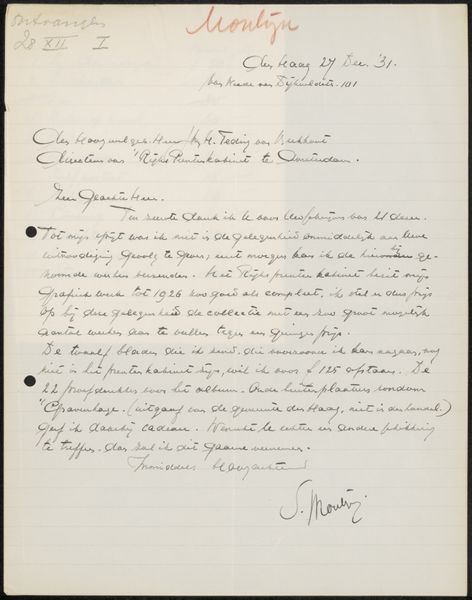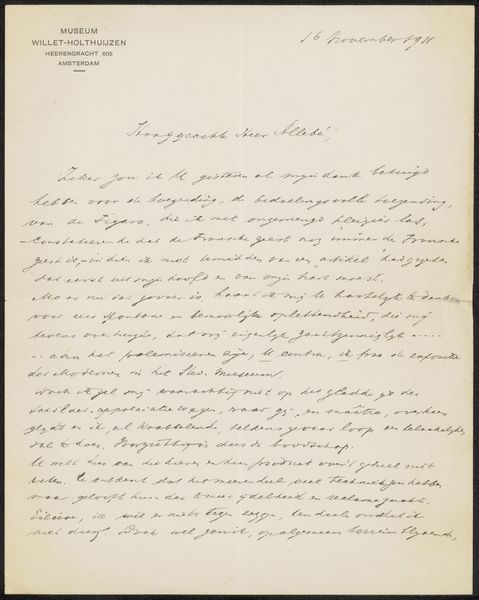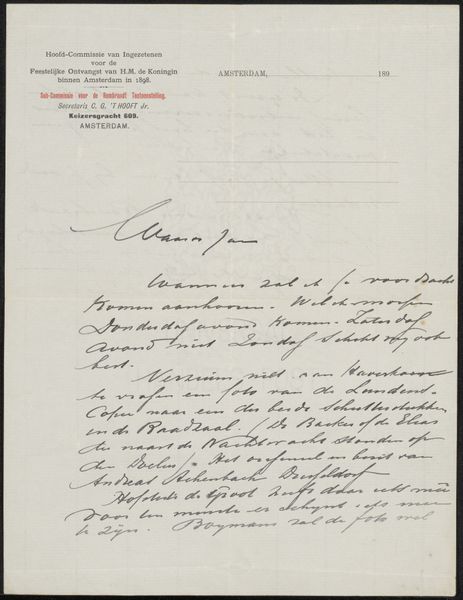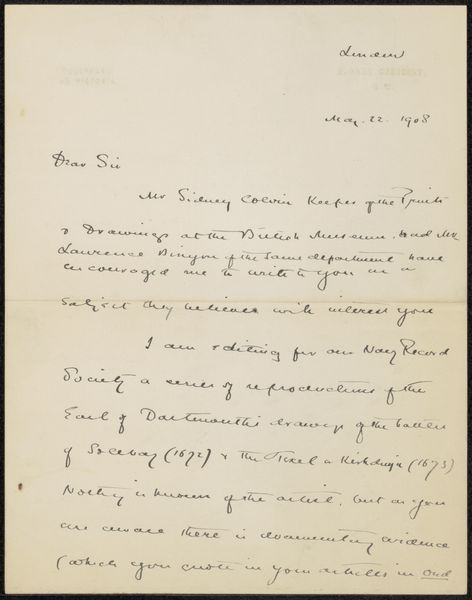
drawing, paper, ink, pen
#
drawing
#
aged paper
#
ink paper printed
#
old engraving style
#
hand drawn type
#
paper
#
personal sketchbook
#
ink
#
hand-drawn typeface
#
ink colored
#
pen work
#
sketchbook drawing
#
pen
#
sketchbook art
#
calligraphy
Copyright: Rijks Museum: Open Domain
Editor: This is "Brief aan Jan Veth," possibly from 1920 to 1929, and appears to be ink on paper. The handwriting has a strong calligraphic style. What draws me in is the contrast between the formal letterhead and the personal, almost hurried, handwriting below. What do you see in this piece? Curator: The script holds cultural memory. Note how the formal letterhead evokes the established Rijksakademie, projecting authority, while the handwritten text suggests a personal communication—perhaps a plea, a reprimand, or an intimate sharing of ideas. Notice how the script itself becomes an embodiment of these shifting registers. The hand-drawn quality hints at something intimate, urgent even. Editor: Intimate, yes. The density of the writing and the looping ascenders and descenders give it a secretive air. Does the style of script indicate anything about the writer's social standing or personality? Curator: The handwriting, likely reflecting the writer's education and social class, served as a powerful signifier. While not perfectly legible to us now, the flourishes and consistent slant indicate someone highly literate and schooled in a particular calligraphic tradition. Editor: It’s like a coded language, visible but not immediately understandable. Curator: Precisely! The visual texture, the density, and the rhythm of the lines work together to create a layered effect—a public face and a private intention coexisting on the same page. This invites the viewer into a process of decipherment, unlocking meaning over time. We can see how visual language embodies emotional weight. Editor: That's given me so much to think about – how handwriting itself can carry so much cultural and personal meaning. Curator: Indeed, even what we might overlook holds hidden treasures when viewed through an iconographic lens.
Comments
No comments
Be the first to comment and join the conversation on the ultimate creative platform.
